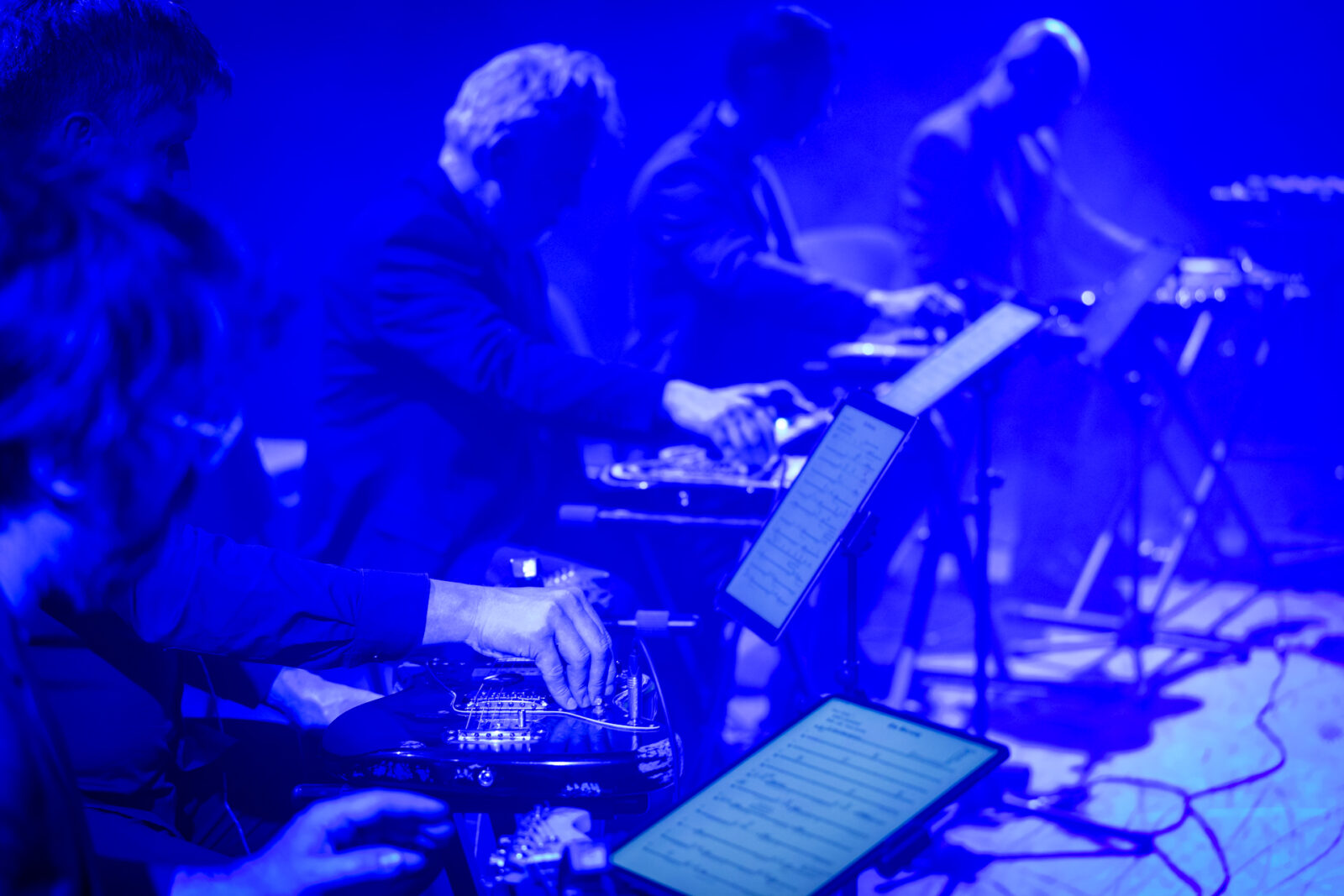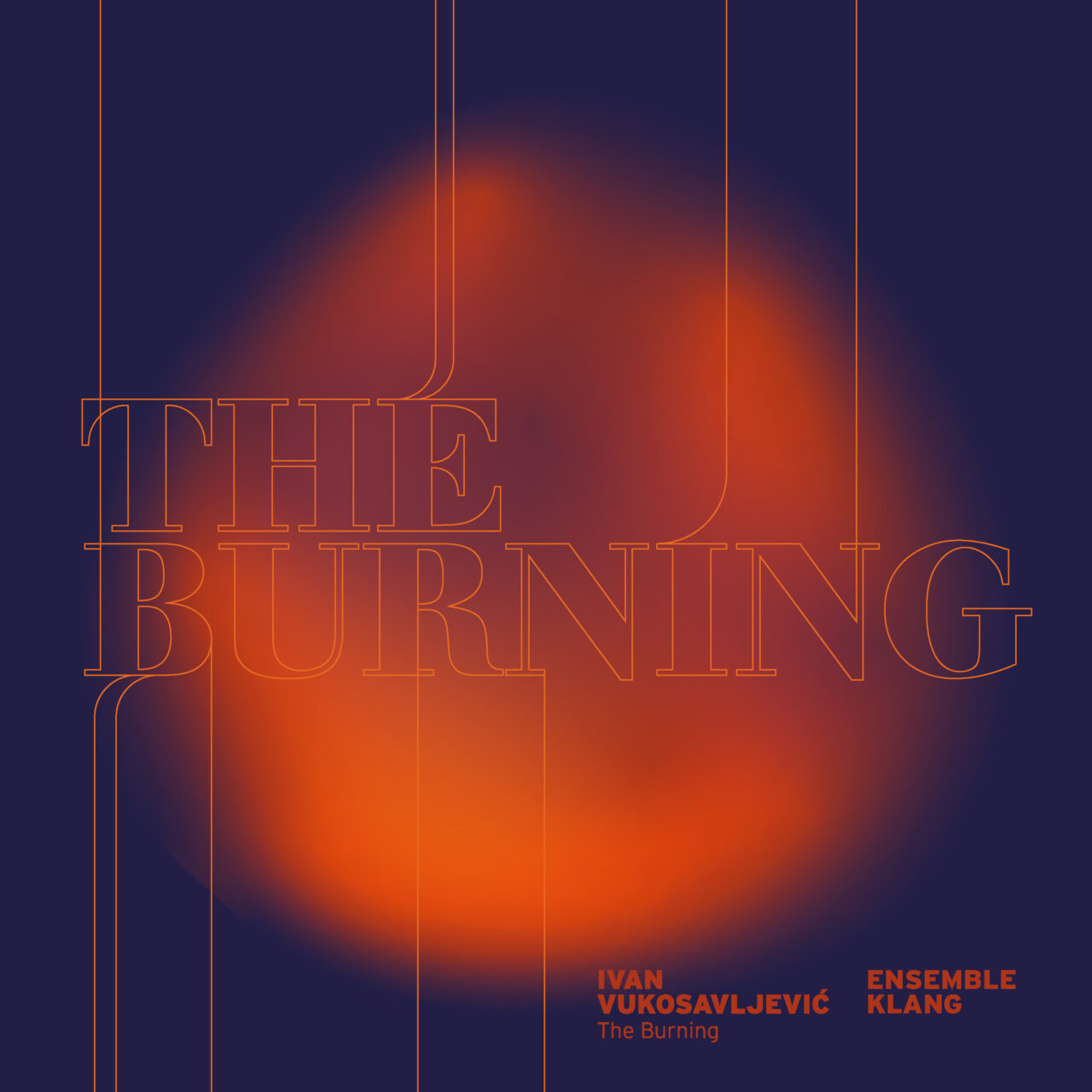Ivan Vukosavljević’s The Burning
Ksenija Stevanović’s liner notes for the album The Burning – Ivan Vukosavljević. Further info, credits and sales at EnsembleKlangRecords.com
The word ‘burning’, according to the Merriam-Webster Dictionary, has three distinct meanings: being on fire as in being ardent or intense; affecting with or as if with heat; and being of fundamental importance as in being urgent.
The Burning by Ivan Vukosavljević brings forth an interplay of all of these connotations within the realm of sonic imagery. It is an abstract musical burning that burns as bright, vivid and urgent as a real, flickering fire.
“the very act of performing and listening to it is a creation of the sound world that it inhabits”
Formally speaking, The Burning consists of four distinct parts that are punctuated by addition or subtraction of sound groups and colours. The first part introduces the material foundation of the whole sonic structure: the sound of a choir of electric guitars prepared with magnets and played by EBows. This layer, like in some gigantic pyre, is akin to the burning material that would start the fire and maintain it as long as possible. The electric guitars form, in other words, a majestic drone that spreads for the whole duration of the composition, becoming the essence of its being in time.
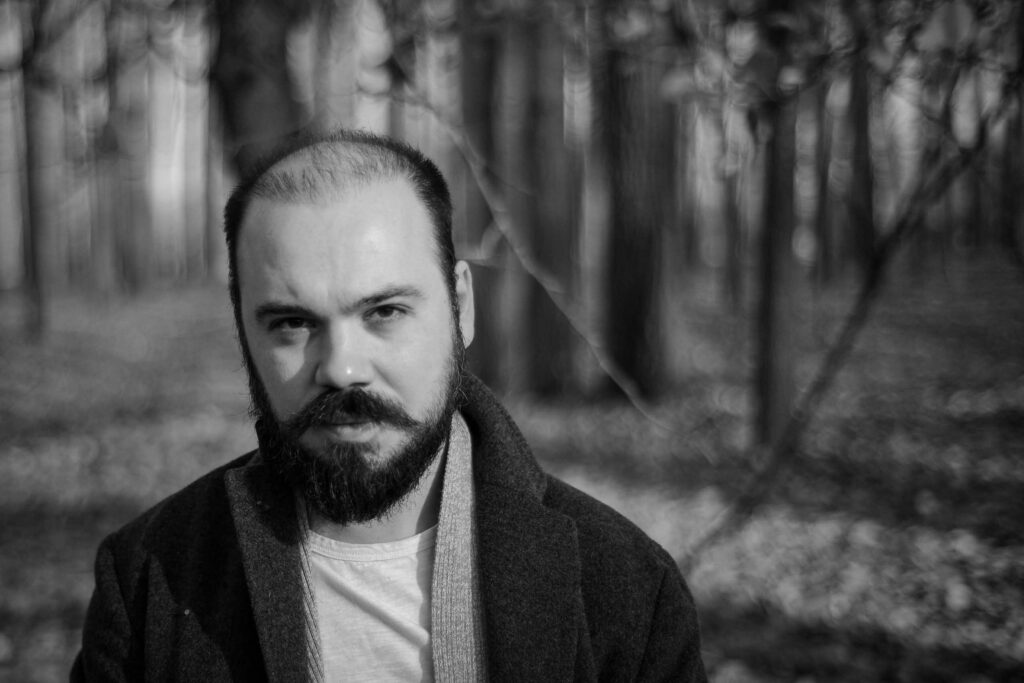 Ivan Vukosavljević (photo by Nenad Vulić)
Ivan Vukosavljević (photo by Nenad Vulić)
This continuous sound frame is pivoted by two distinctive sound groups: the vibraphone-electric guitar-keyboard (bells) fraction; and the double soprano sax, trombone and keyboard (sine waves/organ) grouping. They take up the role of soloists, making a melodic imprint of the composition. They bring forth two thematic gestures: one wide, homophonic, spreading across several registers in unison; and another more restrained, polyphonic in nature and closely knit. In the final, fourth part all the groups come together in a powerful culmination of the work. It is worth mentioning the switch here from the two soprano saxes to a tubax and a baritone saxophone, thereby making the overall sound even thicker and more powerful. The melodic material is derived from the wide, homophonic theme that is rendered in an effective and far reaching way. Alongside the guitar drone and the melodic uttering, we hear the mysterious, melismatic melody in the sine waves-organ keyboard that conjures an uncanny, different, otherworldly atmosphere.
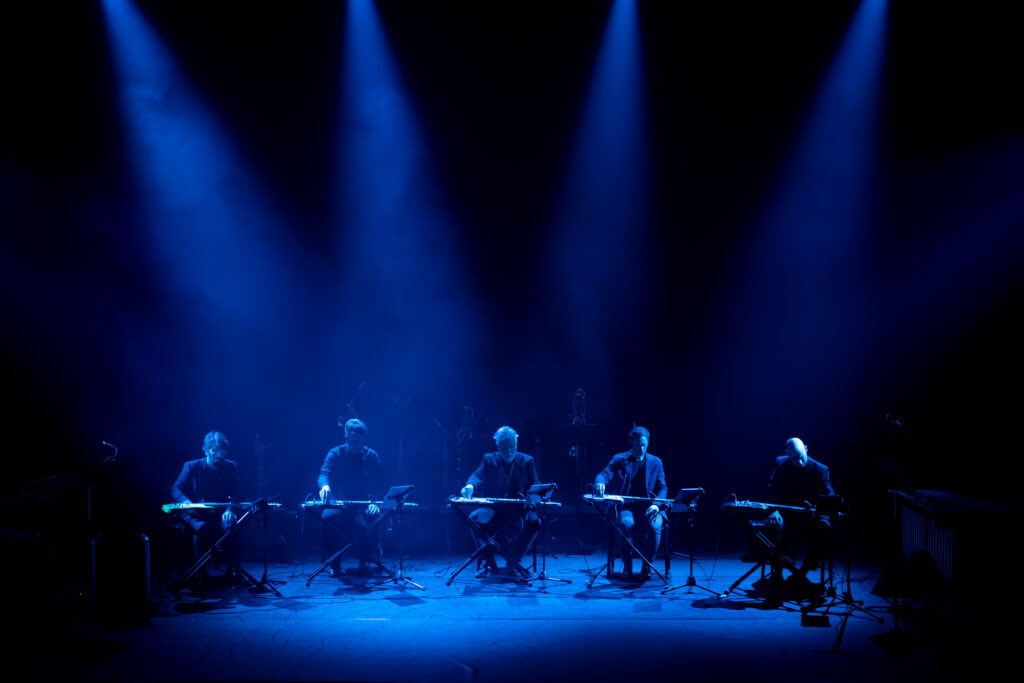 Ensemble Klang behind the five EBow guitars, Korzo, The Hague (31 March 2023)
Ensemble Klang behind the five EBow guitars, Korzo, The Hague (31 March 2023)
These sound realms overlap and propel each other to a conclusion in which only the guitar drone remains. Before this the sound mass grows and burns bright, enveloping the time-space continuum with almost ritualistic abandon.
In this sense, The Burning is a musical composition that invites listeners in. There is almost no escape from its sonic fire. It is grand, majestic and vast. Encompassing the many layers of listening experience and musical time.
The Burning is a musical event as well as a meticulously planned and scored composition. Its sound world is felt in all the membranes of the body. The body reverberates and floats with the work’s vast and brash sound. Turn the volume up. This is no background listening.
 EBow balanced over The Burning's Guitar 4
EBow balanced over The Burning's Guitar 4
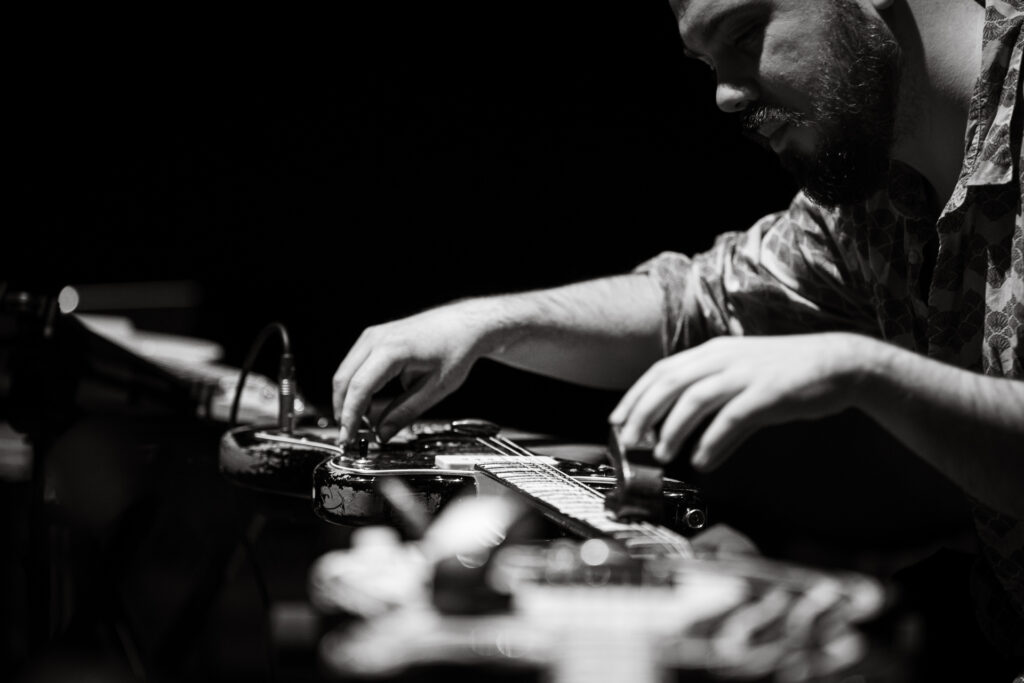 Ivan Vukosavljevic preparing the guitars
Ivan Vukosavljevic preparing the guitars
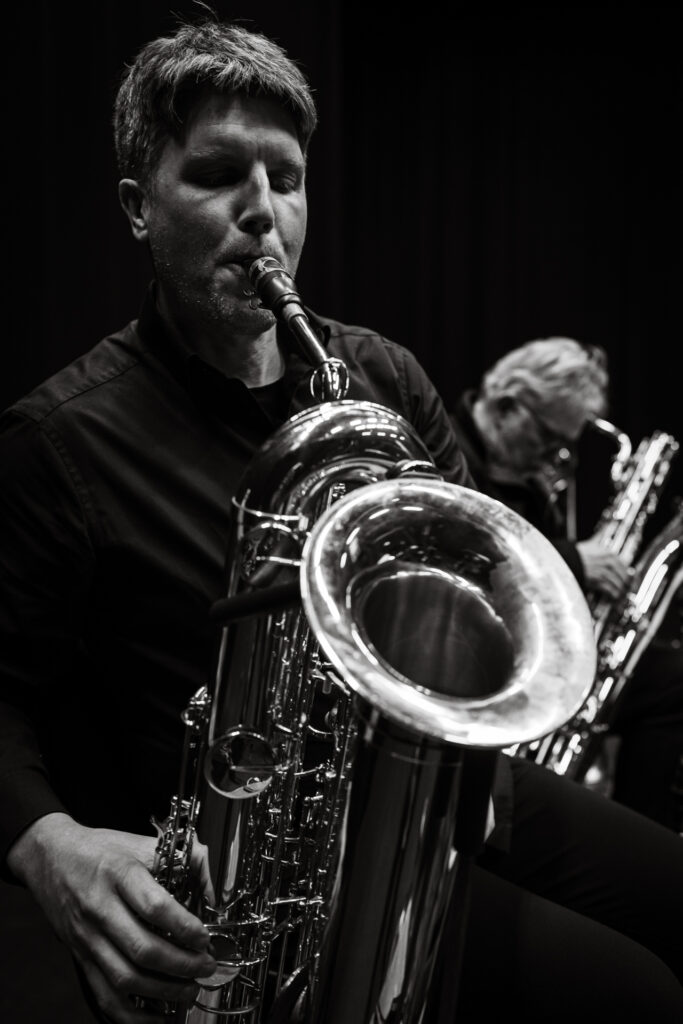 Erik-Jan de With behind the tubax
Erik-Jan de With behind the tubax
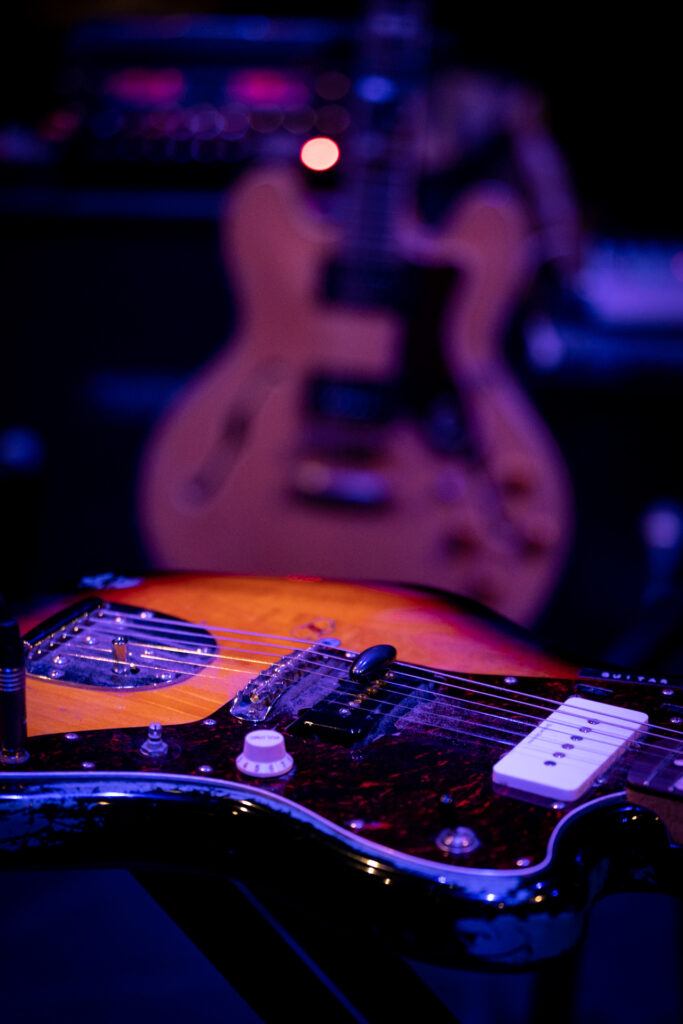 The magnet balanced over the pickup on The Burning's Guitar 2
The magnet balanced over the pickup on The Burning's Guitar 2
The Burning is a physical experience as well as a musical one, with its sound mass hurtling towards you and sweeping the listener in.
At the same time, The Burning is first and foremost a composition that relies on a right and balanced execution. Ensemble Klang to be precise. It is written for musicians who are not afraid to be drawn in and submerged in its crackling, sonic fire. The musicians are, on the contrary, ready to maintain it and sustain it.
The Burning demands a musical collective that works and listens together as the very act of performance. Only in this way can it open a portal for the audience to be drawn in as an additional ensemble member to create a potent collective listening experience.
“witches and Joan of Arc may burn, but their sacrifice is always an unflinching mirror onto those who start the fire”
My first impression of The Burning was of something mysterious and ceremonial, a medieval, ancient mystery. There was a hint of something similar to grand music written for rooms with high-vaulted ceilings, such as cathedrals or great temples. The title brought forth a very particular meaning of the burning: that of witches. In a personal, female collective consciousness the burning always has this particular connotation, if we live within the European imaginarium as such. Of course, both the witches and Joan of Arc may burn, but their sacrifice is always an unflinching mirror onto those who start the fire: it shows the society as more narrow and unforgiving, more evil maybe, more unwilling to look at its own dark heart. In a way, in the music itself I have heard with my inner ear an evocation of something uncanny, strange, foreboding, but only in fleeting moments of fancy.
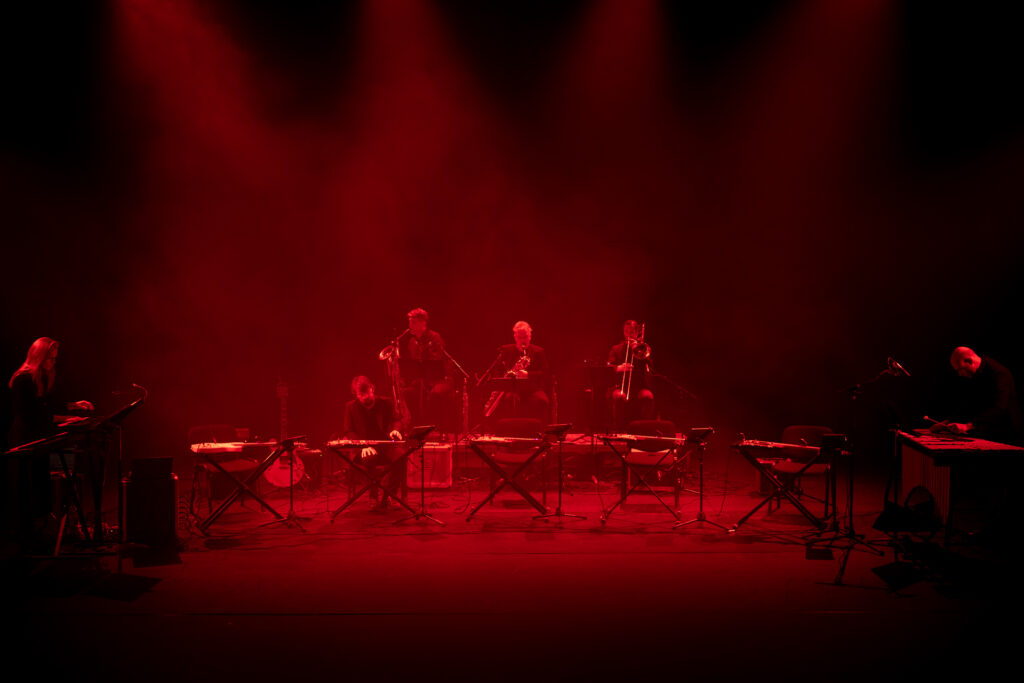 Ensemble Klang play The Burning, Korzo, The Hague, 31 March 2023
Ensemble Klang play The Burning, Korzo, The Hague, 31 March 2023
These are only free associations, the music itself is abstract and unflinching when faced with a signifying machine of language. Yet, the music of The Burning is very visual. Visual in an abstract, emotional way, that summons in the very act of listening the possibility to imagine new worlds.
The imagery of fire is very deep, multi-faceted and ancient. As one of the elements, the fire is at the same time soothing when giving us warmth and providing us with food, but also dangerous and destructive when it burns all that it encounters on its way. We as children learn that we need fire, but that we should be wary of playing with it. At the same time the very process of burning, as we saw from the way we use this word, is exciting and fascinating, albeit in its perilousness.
In this sense, Ivan Vukosavljević’s The Burning reminded me of the video/sound installation Fire Woman by American artist Bill Viola. I was captivated by the sheer power and meditative quality of this work, and its transcendental power to transpose the gaze onto the primeval imagery we are carrying within us, unaware.
While listening to the 45 minutes of continuous unfolding of The Burning I was bewitched by its own meditative quality — the quality of its immersive sound world that relies on deep listening processes and a good deal of abandonment of the preconceptions that usually take place in regard to what contemporary music is or should be. In a sense, The Burning is an event that has no precedent or follow-up: the very act of performing and listening to it is a creation of the sound world that it inhabits.
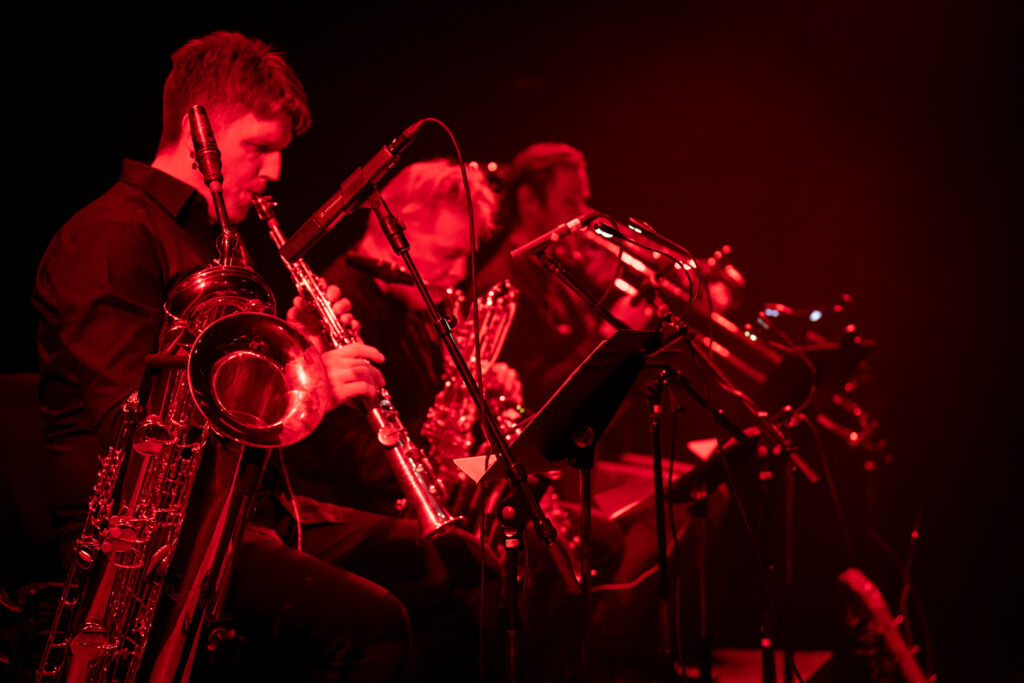 The horn section of Ensemble Klang during The Burning
The horn section of Ensemble Klang during The Burning
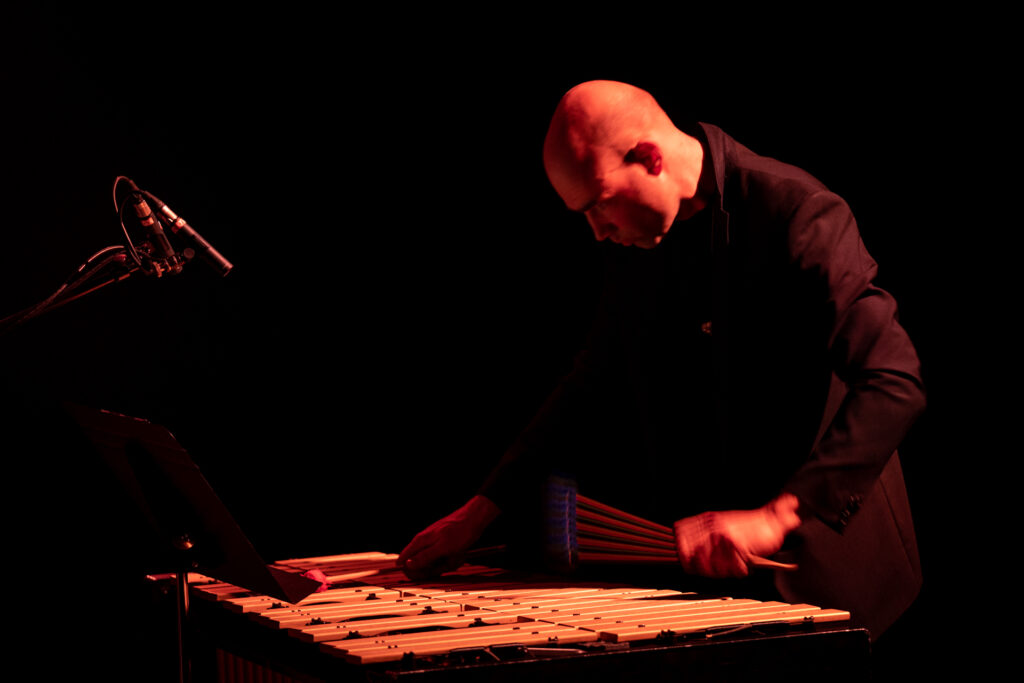 Joey Marijs behind the vibraphone, Korzo, 31 March 2023
Joey Marijs behind the vibraphone, Korzo, 31 March 2023
Ivan Vukosavljević’s The Burning is an immersive experience that reverberates with the care by which it’s constructed and executed. It is a slow burning of the sonic fire, built on intensity and deep listening. It affects you as a form of sonic fever, with a ticking sound that emerges and envelopes the listener slowly but firmly until the realisation comes that we are inside of the burning sonic thought: this is what music-making should be today. It should be urgent, acute, well-thought, precise, well-executed, multilayered and mysterious. One of a kind and always different. A conversation of eager minds.
And in this world that burns this is all that matters.
Ksenija Stevanović is a music journalist and musicologist from Belgrade, Serbia. She has been specialising in New Music for 15 years and is a permanent member of the RTS – Radio Belgrade 3, as well as president of CHINCH – Contemporary Music Initiative Belgrade.

